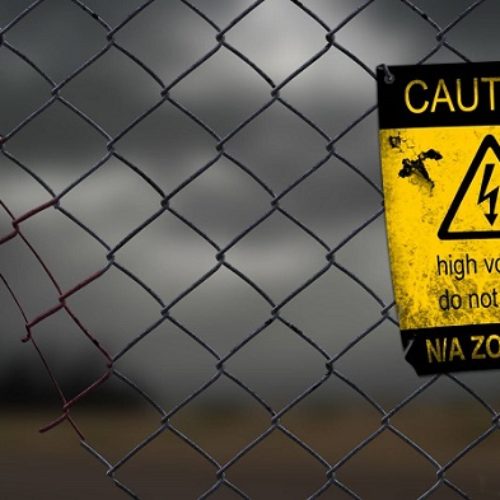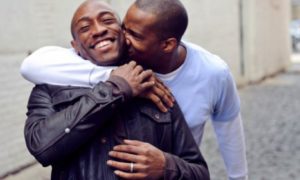LGBTQ Definitions Every Good Ally – And LGBT Individual – Should Know
Millions of non-heterosexual minorities identify as LGBTQ, and like any group, they have their own language to talk about both who they are and the challenges they face in a society that doesn’t fully accept or protect them – language that include the following terms that are by no means exhaustive. And some of these terms — because they are so personal — likely mean slightly different things to different people.
Let’s get started.
LGBTQ: The acronym for “lesbian, gay, bisexual, transgender and queer.” Some people also use the Q to stand for “questioning,” meaning people who are figuring out their sexual orientation or gender identity. You may also see LGBT+, LGBT*, LGBTx, or LGBTQIA. ‘I’ stands for intersex and ‘A’ for asexual/aromantic/agender. The ‘A’ has also been used by some to refer to “ally.”
Speaking of intersex – these are those born with sex characteristics such as genitals or chromosomes that do not fit the typical definitions of male or female. About 1.7% of the population is intersex, according to the United Nations.
Sex: The biological differences between male and female.
Gender: The societal constructions we assign to male and female. When you hear someone say “gender stereotypes,” they’re referring to the ways we expect men/boys and women/girls to act and behave.
Queer: Originally used as a pejorative slur, queer has now become an umbrella term to describe the myriad ways people reject binary categories of gender and sexual orientation to express who they are. People who identify as queer embrace identities and sexual orientations outside of mainstream heterosexual and gender norms.
SEXUAL ORIENTATION
Sexual orientation: How a person characterizes their sexuality. “There are three distinct components of sexual orientation,” said Ryan Watson, a professor of Human Development & Family Studies at the University of Connecticut. “It’s comprised of identity (I’m gay), behavior (I have sex with the same gender) and attraction (I’m sexually attracted to the same gender), and all three might not line up for all people.” (Don’t say “sexual preference,” which implies it’s a choice and easily changed.)
Gay: A sexual orientation that describes a person who is emotionally or sexually attracted to people of their own gender; commonly used to describe men.
Lesbian: A woman who is emotionally or sexually attracted to other women.
Bisexual: A person who is emotionally or sexually attracted to more than one sex or gender.
Pansexual: A person who can be attracted to all different kinds of people, regardless of their biological sex or gender identity. Miley Cyrus opened up last year about identifying as pansexual.
Asexual: A person who experiences no sexual attraction to other people.
Demisexual: Someone who doesn’t develop sexual attraction to anyone until they have a strong emotional connection.
Aromantic: A person who experiences little or no romantic attraction to others.
GENDER IDENTITY AND EXPRESSION
Gender identity: One’s concept of self as male, female or neither (see “genderqueer”). A person’s gender identity may not align with their sex at birth; not the same as sexual orientation.
Gender role: The social behaviors that culture assigns to each sex. Examples: Girls play with dolls, boys play with trucks; women are nurturing, men are stoic.
Gender expression: How we express our gender identity. It can refer to our hair, the clothes we wear, the way we speak. It’s all the ways we do and don’t conform to the socially defined behaviors of masculine or feminine.
Cisgender: A person whose gender identity aligns with the sex they were assigned at birth.
Transgender: A person whose gender identity differs from the sex they were assigned at birth.
Transsexual: A person whose gender identity does not align with the sex they were assigned at birth, and who takes medical steps such as sex reassignment surgery or hormone therapy to change their body to match their gender.
Transvestite: A person who dresses in clothing generally identified with the opposite gender/sex.
Trans: The overarching umbrella term for various kinds of gender identifies in the trans community.
Drag kings & drag queens: People, some who are straight and cisgender, who perform either masculinity or femininity as a form of art. It’s not about gender identity.
Binary: The concept of dividing sex or gender into two clear categories. Sex is male or female, gender is masculine or feminine.
Non-binary: Someone who doesn’t identify exclusively as female/male.
Genderqueer: People who reject static, conventional categories of gender and embrace fluid ideas of gender (and often sexual orientation). They are people whose gender identity can be both male and female, neither male nor female, or a combination of male and female.
Agender: Someone who doesn’t identify as any particular gender.
Gender-expansive: An umbrella term used to refer to people, often times youth, who don’t identify with traditional gender roles.
Gender fluid: Not identifying with a single, fixed gender. A person whose gender identity may shift.
Gender non-conforming: People who don’t conform to traditional expectations of their gender.
Bottom surgery: A colloquial way of referring to gender affirming genital surgery.
Top surgery: Colloquial way of describing gender affirming surgery on the chest.
Androgynous: A person who has both masculine and feminine characteristics, which sometimes means you can’t easily distinguish that person’s gender. It can also refer to someone who appears female — like Orange is the New Black‘s Ruby Rose, for example — but who adopts a style that is generally considered masculine.
‘OUT’ VS. ‘CLOSETED’
Coming Out: The complicated, multi-layered, ongoing process by which one discovers and accepts one’s own sexuality and gender identity. One of the most famous coming outs was Ellen DeGeneres, with “Yep, I’m gay” on the cover of Time magazine 20 years ago. Former President Obama awarded DeGeneres a Presidential Medal of Freedom in 2016, saying that her coming out in 1997 was an important step for the country.
Outing: Publicly revealing a person’s sexual orientation or gender identity when they’ve personally chosen to keep it private.
Living openly: An LGBTQ people who is comfortable being out about their sexual orientation or gender identity.
Closeted: An LGBTQ person who will not or cannot disclose their sex, sexual orientation or gender identity to the wider world.
Down low: A term often used to refer to men who identify as heterosexual but have sex with men.
ATTITUDES
Ally: A person who is not LGBTQ but uses their privilege to support LGBTQ people and promote equality. Allies “stand up and speak out even when the people they’re allying for aren’t there,” said Robin McHaelen, founder and executive director of True Colors, a non-profit that provides support for LGBTQ youth and their families. In other words, not just at pride parades.
Sex positive: An attitude that views sexual expression and sexual pleasure, if it’s healthy and consensual, as a good thing.
Heterosexual privilege: Refers to the societal advantages that heterosexuals get which LGBTQ people don’t. If you’re a straight family that moves to a new neighborhood, for example, you probably don’t have to worry about whether your neighbors will accept you.
Heteronormativity: A cultural bias that considers heterosexuality (being straight) the norm. When you first meet someone, do you automatically assume they’re straight? That’s heteronormativity.
Heterosexism: A system of oppression that considers heterosexuality the norm and discriminates against people who display non-heterosexual behaviors and identities.
Cissexism: A system of oppression that says there are only two genders, which are considered the norm, and that everyone’s gender aligns with their sex at birth.
Homophobia: Discrimination, prejudice, fear or hatred toward people who are attracted to members of the same sex.
Biphobia: Discrimination, prejudice, fear or hatred toward bisexual people.
Transphobia: Prejudice toward trans people.
Transmisogyny: A blend of transphobia and misogyny, which manifests as discrimination against “trans women and trans and gender non-conforming people on the feminine end of the gender spectrum.”
TERF: The acronym for “trans exclusionary radical feminists,” referring to feminists who are transphobic.
Transfeminism: Defined as “a movement by and for trans women who view their liberation to be intrinsically linked to the liberation of all women and beyond.” It’s a form of feminism that includes all self-identified women, regardless of assigned sex, and challenges cisgender privilege. A central tenet is that individuals have the right to define who they are.
Intersectionality: The understanding of how a person’s overlapping identities — including race, class, ethnicity, religion, sexual orientation and disability status — impact the way they experience oppression and discrimination.
About author
You might also like
EXCLUSIVE! Pamela Adie’s Official Statement Regarding Her Federal High Court Suit Against Corporate Affairs Commission
In 2017, Pamela Adie founded Lesbian Equality and Empowerment Initiative (LEEI), a nonprofit organization whose objective is to advocate for the fundamental human rights of female sexual minorities in Nigeria.
CHASING ROGUE (Part 2)
Previously on CHASING ROGUE… *** The above was the exchange that took place right as I was about to board a bus back to Aguda. As we texted back and
URGENT! Another Reason To Be Careful
A good friend of mine and fellow KDian was kind enough to share the information below that awoke a mix of emotions inside me. Apparently, our police force has decided










7 Comments
Ken George
August 07, 06:18Its amazing to think that some of us know all these terms, not by being taught in school or reading any book but by living through/along side them
When u meet an lgbtq u just know. Theres no formal intro and u don’t even have to speak to each other
Mandy
August 07, 06:48Three terms I just don’t get:
Genderqueer
Non binary, and
Agender.
Can someone please ëlaborate more on these terms for me?
Malik
August 07, 06:55Tbh I grew up with the notion that the LGBTQIA was weird, wrong and sinful. I learnt to accept the spectrum because I was one of the letters.
trystham
August 07, 07:57I think I was right then. The Nigerian law limits itself to ‘behaviour’, not the identity or attraction. That fucking lawyer could have done better.
@Malik True. We had to live thru these things to know all these things. And after my experiences and arguments here, I have come to believe the gender/sexual fluidity mantra.
JImmy
August 07, 13:17errrr…about drag queens and kings, you can be gay and still be a drag queen and king
Karh
August 21, 03:48Jesus Christ!!. I’m on the DL anyway.
Pink Panther
August 21, 05:46And for that, you don’t have to educate yourself on rudimentary LGBT knowledge?